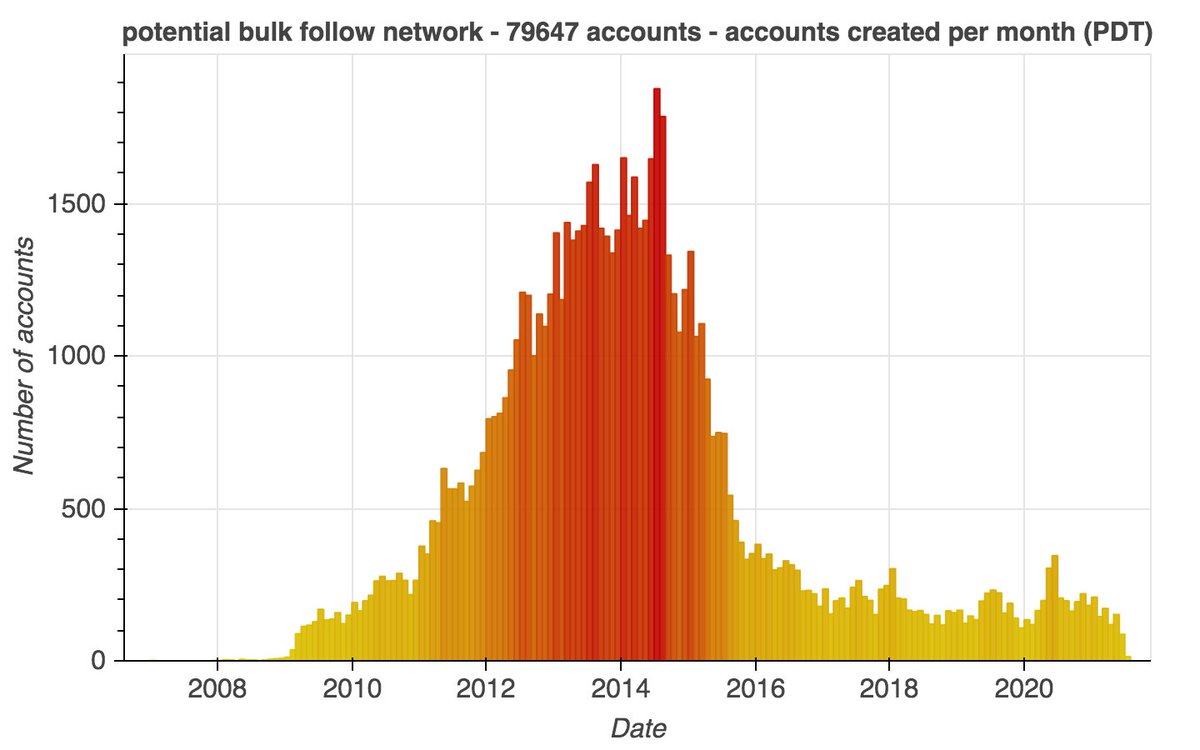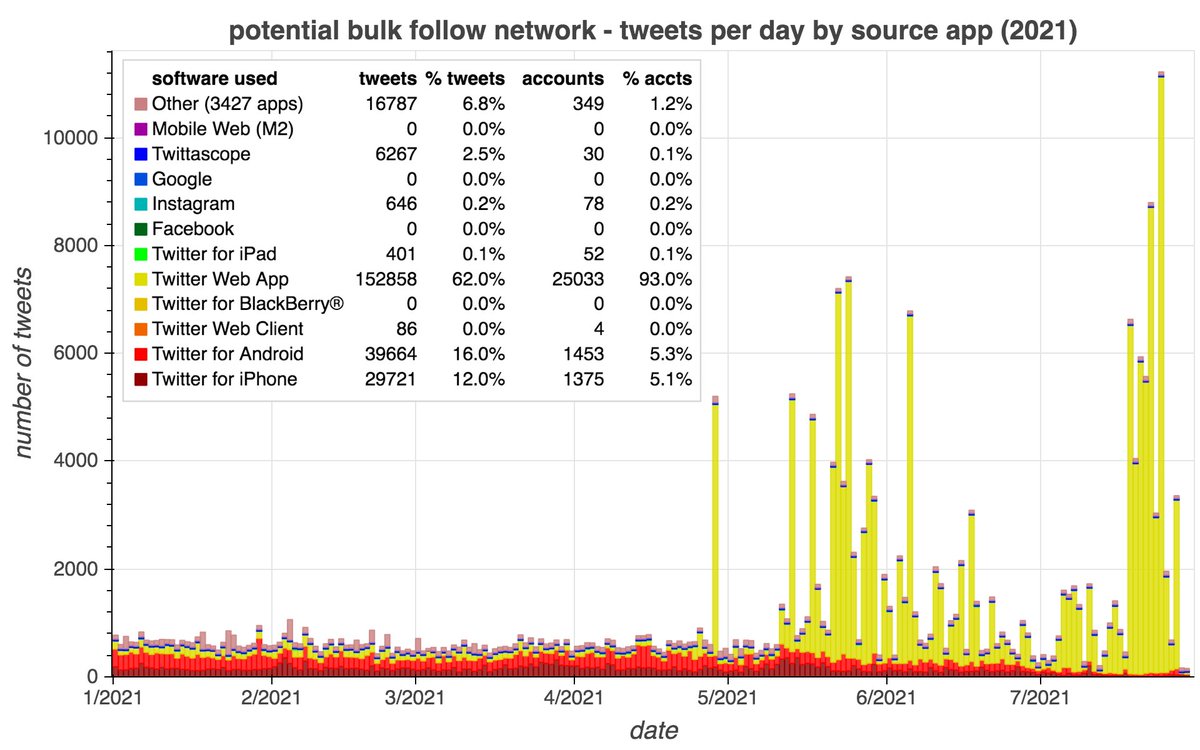If you've got $500 laying around that you can't wait to spend on something totally pointless, you could always snag @diegorm222 (ID 3314630561) or @ThatDubstepDJ (ID 398479839). It doesn't matter which one you buy since they basically have the same followers.
cc: @ZellaQuixote

cc: @ZellaQuixote


A third account, @Cryptocurrentcc, shares nearly all of its followers with @diegorm222 and @ThatDubstepDJ. A total of 79647 accounts follow all three, comprising at least 96.7% of each main account's followers. Very few are new accounts, which is also unusual. 

.@diegorm222, @ThatDubstepDJ, and @Cryptocurrentcc are all older accounts that have been mostly purged of tweets prior to July 2021. Recent content is all cryptocurrency-themed. Despite their age, these three accounts gained almost all of their 80K-ish followers in summer 2021. 







The 79647 accounts that follow all three of @diegorm222, @ThatDubstepDJ, and @Cryptocurrentcc are mostly older, many of which had been silent for years until early 2021. Old tweets were sent via a variety of apps, while new tweets were mostly tweeted via the Twitter Web App. 



The recent Twitter Web App traffic began abruptly in late April, and the content is quite repetitive. Many of the repetitive tweets are replies, which in some cases have posted verbatim by hundreds or thousands of accounts. Cryptocurrency is a recurring theme. 





In addition to the repetitive tweets and replies, the accounts in this network also engage in retweeting, and they largely retweet the same accounts (mostly large Arabic-language accounts). 

More on the follow order by creation date plots used in this analysis (including source code):
https://twitter.com/conspirator0/status/1408589182944124934
• • •
Missing some Tweet in this thread? You can try to
force a refresh































